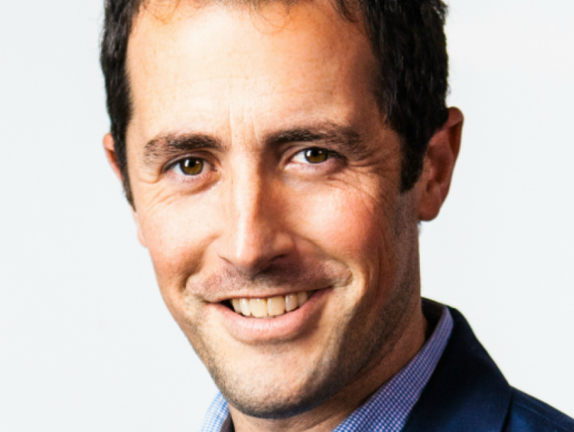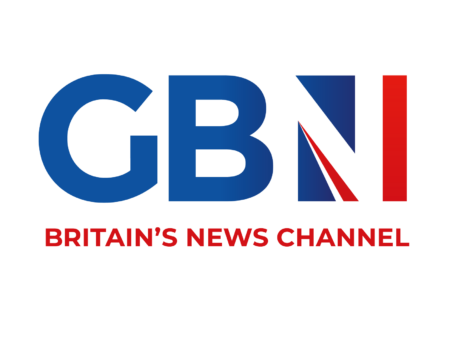
Financial Times news editor Matt Garrahan has said the newsroom is somewhere that “bottles lightning every day” and he is keen for staff to return to their desks as soon as possible.
Garrahan said that young reporters in particular were missing out on the experience of working in a busy newsroom, telling Press Gazette: “It’s a much more sterile experience without that.”
While most FT staff have been working remotely since the UK went into lockdown, Garrahan, alongside editor Roula Khalaf, has continued to go into the newsroom at Bracken House throughout.
He said there were often only three people in the historical building, which the FT returned to in 2019 after 30 years away.
“I just thought it was important to keep going in so people knew that we were still there,” said Garrahan (pictured), who has worked at the FT for more than 20 years in various roles, including global media editor.
Changes to working culture are just one of the issues likely to come up in the FT’s Future of News event, which will discuss issues facing the news industry in a virtual setting on Thursday.
Garrahan said the coronavirus pandemic had necessitated a “complete adjustment” to the workings of the newsdesk as reporters were “scattered in different places”, with the new challenge of “coordinating between desks and with reporters” and making up for lost real-world interactions.
He described the pandemic as like a “slow-motion car crash”.
The FT’s morning news conference has been virtual since the first UK lockdown in March 2020. Prior to restrictions on movement to slow the spread of Covid-19, Garrahan said the FT had been “a proper newsroom with a lot of noise, a lot of activity”.
“You’d literally feel the adrenaline when the paper was getting put to bed, people hammering away on keyboards to get stories written, yelling at production team, yelling at pictures and all that. And being the heart of that was just brilliant. I’ve missed that and I think you need that. It’s a much more sterile experience without that, especially for young reporters.
“It’s a very intoxicating environment when you’re in it and on a big story – there is nothing better than being in a newsroom when everyone’s really going for it.”
While working remotely the FT has nonetheless found continued success, winning News Provider of the Year at the British Journalism Awards 2020 for a record third time. It also recently broke the story about ex-PM David Cameron’s lobbying for the now collapsed Greensill bank.
Garrahan said: “…these are brilliant moments, but still I think it will be better for us and better for the industry generally when people are back in and everything’s firing on all cylinders.”
He added: “I’m just keen… that we do get back to a newsroom environment because I think it’s essential – you need the energy of a newsroom and you need to be able to eyeball people; you need those random moments where ideas are born, and you often can’t schedule those in the way you schedule a call.
“It bottles lightning every day, a newsroom. It’s an organic thing where ideas happen. And [journalism] is a creative business. You need to be around people in a creative business, I think.”
Garrahan said he hoped “most people would be back by the end of the year”, after they’d had their second dose of the vaccine. An FT spokesperson said they don’t expect a “significant staff presence” in the newsroom before September, with a more flexible work culture on return.
Khalaf herself warned about the long-term switch to remote working, saying at the FT’s Future of News event in October last year that many “underestimate what we lose” from not being in the office.
Payment models are a theme already set out for discussion at the FT’s Future of News event, including how to entice readers to pay for news. The results of a YouGov survey, published this week, found that 10% of people said they would be prepared to pay for online news articles.
The FT is a media success story when it comes to the implementation of a subscription model, with more than 1m paying subscribers. But there have been concerns that the move to paywalls will create a kind of ‘information elite’ and leave others, who perhaps can’t afford to pay, behind.
[Read more: The 100k Club: Most popular subscription news websites in the world revealed]
But Garrahan said that paying for news was not a new concept. “The days when mass-market print titles were the only game in town, I don’t think people were worried about elite news consumers,” he said.
“The big struggle for the industry is: can you create models where you can have mass consumption at an affordable price?
“The FT is aimed at a particular segment and will not be affordable for many people, because that’s the market we’re aiming at, but I’d hope that other brands looking at different parts of that market will be able to find models that work.”
He added: “You want people to want to pay for it. You also want a population that wants to learn more and thinks that buying a newspaper and finding out what’s going on is worth their time and money. I think if it’s compelling enough and good enough then they’ll do that.”
One change that’s come about in recent months is a commitment from tech giants Google and Facebook, which together form a duopoly on internet advertising, to pay publishers directly for news content, with each platform pledging £1bn over three years.
[Read more: $1bn news fund is one small step for Google, but a giant leap for principle of paying for news]
Garrahan said: “There’s clearly some tension in the relationship between news providers and the platforms. They do help news organisations get to bigger audiences and there’s some work to be done on how that relationship evolves going forward.”
Email pged@pressgazette.co.uk to point out mistakes, provide story tips or send in a letter for publication on our "Letters Page" blog






